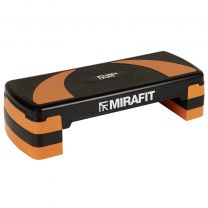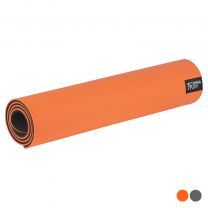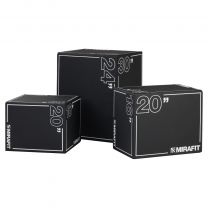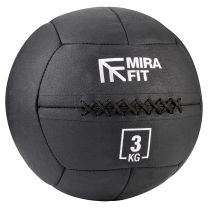Q&A - Planks
Q&A - Planks
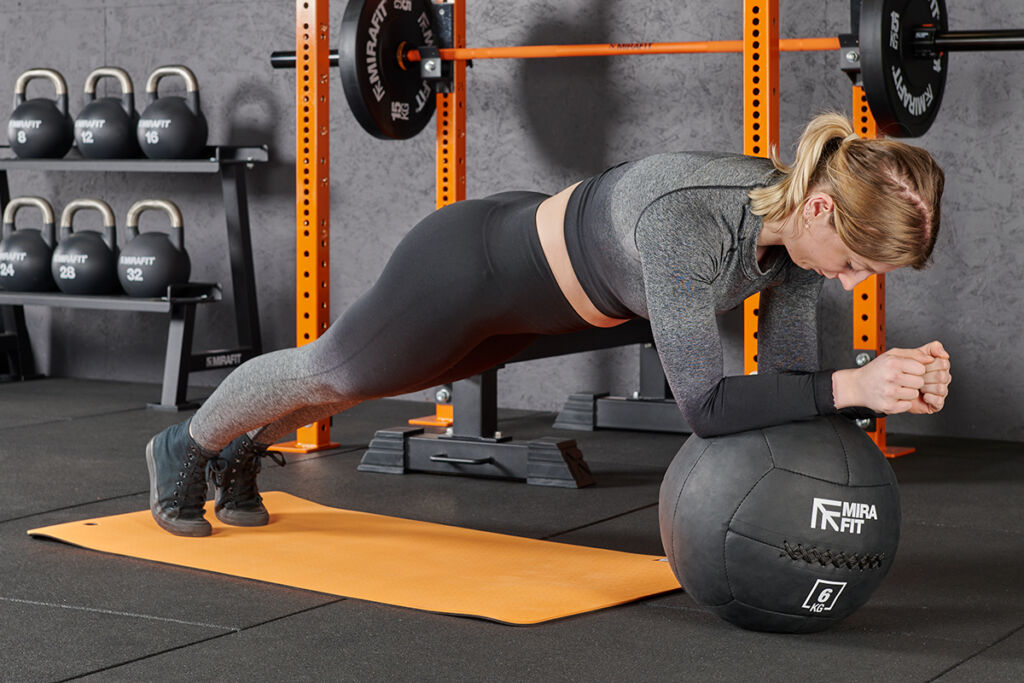
Planks are one of the most popular core exercises because they are suitable for most people and can be adjusted to fit different experience levels and training goals. It’s a fundamental exercise because it works on both the superficial and deep core muscles, helping to improve posture, stability and overall strength.
How to Plank
• Start by placing your hands on an Exercise Mat with your hands, elbows and shoulders all in line.
• Step back so that your body is straight and place your feet together with the balls of your feet resting on the mat.
• Maintain a neutral neck and spine. Look at the floor to avoid straining your neck.
• Brace your core muscles and glutes as you push your body away from the floor.
• Hold this position, maintaining a neutral spine throughout. Try to hold for as long as you can.
• Make sure to breathe throughout the exercise.
Is It Better to Plank On Your Elbows or Hands?
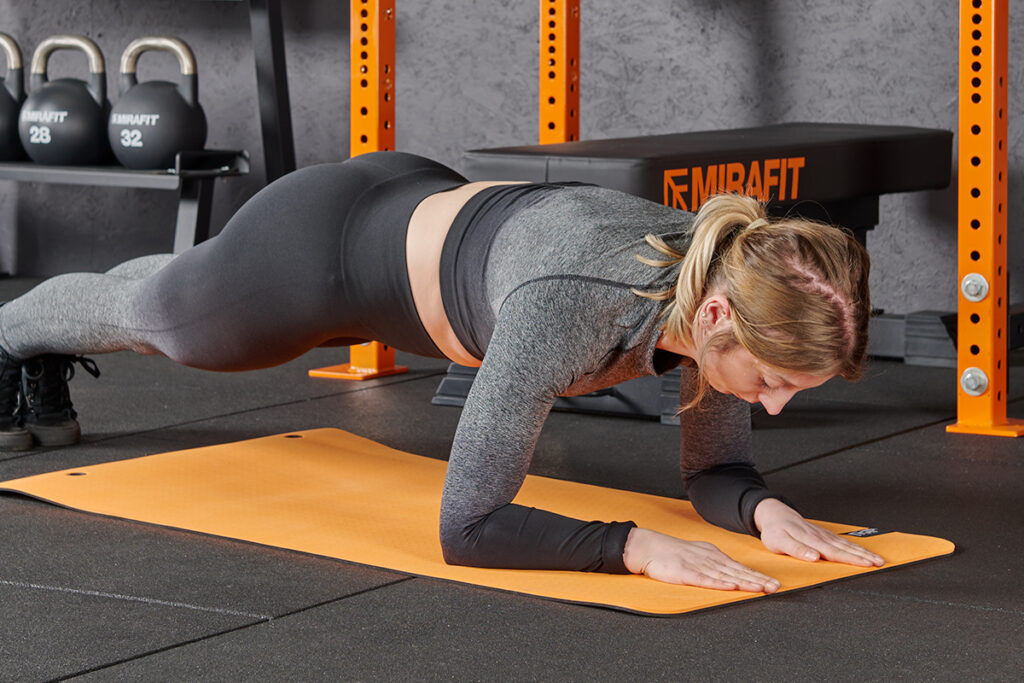
There is no best way to plank, whether you choose to perform a plank on your elbows or hands depends on personal preference. Here are some of our favourite plank variations.
Low Plank (On Elbows)
• If you suffer with wrist problems or weakness, a forearm plank places less stress on the wrists, still allowing you to still perform the movement.
• Holding a plank on your elbows forces you to engage the forearm muscles.
High Plank (On Hands)
• Planking on your palms can be more challenging, as it engages the muscles in your hands and wrists while requiring more shoulder stability.
• Some people find a full plank more comfortable and it also allows for a greater range of motion.
Side Plank
• Lie on your side on an exercise mat with your legs stacked on top of each other.
• Place your elbow directly under your shoulder, then brace your core muscles as you lift your hips off the mat. This should create a straight line from your head to your feet.
• Maintain a neutral spine throughout. You can keep your feet stacked on top of each other, or place the top foot in front of the other to increase stability.
• Hold the side plank for the desired duration, focusing on maintaining a stable and straight body position.
• If you need to regress this exercise, lower to your knees and complete the movement.
Reverse Plank
• Sit on a mat with your legs extended in front of you and place your hands on the mat just behind your hips, with your fingers pointing toward your feet.
• Press into your hands and lift your hips towards the ceiling so that your body forms a straight line.
• Brace your core muscles and squeeze your glutes to ensure you’re not overloading your lower back.
• Keep your legs extended, and your toes pointing forward. Ensure your weight is evenly distributed between your hands and feet.
• If you need to regress this exercise, hold a reverse tabletop position with your knees bent.
Russian Plank
• Begin in a low plank, bracing your stomach muscles with your body in a straight line
• Clench your hands together in fists in front of you and squeeze your shoulder blades down away from your ears.
• Whilst doing so, tense your quadricep muscles and glutes so that you’re engaging all of the muscles in the body.
• Maintain the tension throughout the exercise by squeezing your muscles. Imagine pulling your feet towards your elbows and your elbows towards your feet.
Should I Look Down When Planking?
When performing a plank, it is usually recommended that to keep your head in a neutral position, you should look down. This helps to maintain a straight line from your head to your heels and keep your neck and spine in alignment, reducing pressure in these areas.
How Long Should I Plank For?

The duration of your plank depends on your experience level and core strength. If you’re a beginner then you might want to start with <30 seconds and build your way up slowly.
If you try to plank for too long too quickly when your core muscles aren’t strong enough then this might lead to your body over compensating and placing the stress on your lower back instead of your core muscles.
Beginners - Start with 20-30 seconds and gradually increase as you build strength and endurance.
Intermediate - Aim for 30 seconds to 1 minute. As you progress, challenge yourself to extend the duration.
Advanced - Advanced individuals may hold a plank for 1-2 minutes or more.
Why Do I Shake So Much When I Plank?
It’s common to shake during a plank, especially if you’re a beginner. The shaking is usually caused by muscle fatigue, this can be the core muscles, but could also be the shoulder muscles that play a pivotal role in stability during the exercise. This occurs because your muscles aren’t used to an isometric contraction and so your muscles tremble. This will reduce as you build strength and practise the exercise.
How Can I Make Planks Easier?

If you find planks challenging, you can regress the movement to make it easier. You will still be gaining the benefits from the exercise, but it’ll be more manageable. If you want to make modify the exercise, here are some things you can do.
Knee Plank - This involves resting on your knees instead of the balls of your feet, reducing the load on your core.
Elevated Surface - Place your hands on an elevated surface such as an Exercise Step. As your core strength improves, you can lower the surface.
Shorter Duration - Begin with shorter durations, such as 10 to 20 seconds, and gradually increase the time as you improve.
How Can I Make Planks Harder?
Once you can comfortably hold a plank for a long period of time (>1 minute) you can progress the exercise to make it more difficult. Here are some of our favourite ways to make a plank harder.
Plate Loaded Plank - Place a light Weight Plate on your back to add additional load to the movement.
Balance On a Slam Ball - Place both hands on a slam ball and hold a regular plank position. The instability of the ball requires more core strength.
Plank Leg Raise - Hold yourself in an elbow or hand plank position and lift one leg in the air at a time whilst keeping it straight and controlled.
What Muscles Do Planks Work?

Planks work several different muscles in the core, which is why they’re fundamental to any core strengthening programme. These are the main muscles, as well as the stabiliser muscles that are used when performing a plank -
• Rectus Abdominis (six-pack muscles)
• Transverse Abdominis
• Obliques
• Erector Spinae
• Deltoids (shoulders)
Do Planks Build Abs?
One of the main muscles that planks use is the rectus abdominis, also known as the ‘six-pack’ muscles. It’s these muscles that are typically known as your ‘ab’ muscles and therefore, building strength in this area can help to define the muscles for the desired aesthetic.
Do Planks Burn Belly Fat?

Although planks don’t directly burn belly fat, they play a pivotal role in building a robust core and improving your overall fitness. The most effective way to burn belly fat is to have a well-rounded strength training programme, work on your cardiovascular health and eat a balanced diet, in a calorie deficit.
Do Planks Burn Calories?
Any form of physical exercise contributes to calorie burning, and that includes planks. Strength training helps to build muscle which can boost metabolism and lead to longer-term calorie burning.
Planks are one of the best exercises for core strength. They work both the internal and superficial core muscles and can be adapted to suit varying experience levels, so start including them in your workouts!
For more content, follow us on Instagram, YouTube, TikTok, and on our official Mirafit Facebook page.
Enter your email to signup to our newsletter

